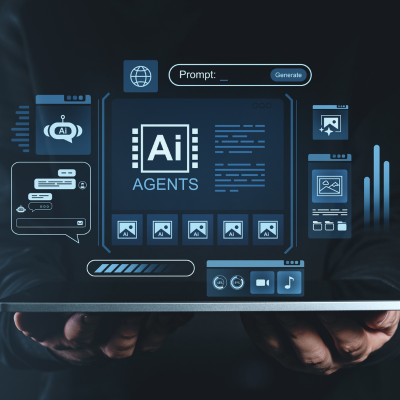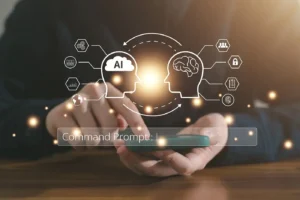In today’s fast-moving tech landscape, delivering high-quality software rapidly isn’t just an advantage—it’s a necessity. Continuous integration pipelines lie at the heart of this transformation, automating the merge, build, test, and deployment processes that define modern DevOps automation. For software engineers, architects, and CTOs, mastering these workflows is essential to staying competitive, reducing errors, and accelerating release cycles.
This article dives deep into continuous integration pipelines, exploring their evolution, core components, and the latest tools powering agile software delivery. We’ll unpack advanced tactics, share a real business case study, and provide actionable tips for teams at every stage of their DevOps journey. Along the way, we’ll highlight how Amquest’s Software Engineering, Generative AI and Agentic AI Course—taught by industry experts in Mumbai and available nationwide—equips learners with the hands-on, AI-led skills needed to excel in this dynamic field.
Background: The Evolution of Continuous Integration Pipelines
The concept of continuous integration (CI) emerged from the need to integrate code changes frequently and catch integration errors early. Before CI, teams often faced “integration hell,” where merging code from multiple developers resulted in prolonged debugging and delayed releases. CI introduced automation: every code commit triggers an automated build and test sequence, ensuring that new changes integrate smoothly with the existing codebase.
As software delivery timelines shrank, continuous delivery (CD) and continuous deployment extended the pipeline, automating the release process to staging and production environments. Today, a robust CI/CD workflow is the backbone of agile software delivery, enabling teams to deploy updates daily—or even hourly—with confidence.
Core Components of a Continuous Integration Pipeline
A typical continuous integration pipeline consists of several automated stages, each designed to validate code quality and readiness for production:
- Source Control: Developers commit code to a shared repository (e.g., Git), serving as the single source of truth and minimizing merge conflicts.
- Automated Build: Each commit triggers a build process, compiling code, resolving dependencies, and generating deployable artifacts.
- Automated Testing: A suite of tests—unit, integration, end-to-end—runs automatically to catch bugs early. Code quality tools (linters, static analyzers) enforce standards and security.
- Staging Deployment: Passing builds are deployed to a staging environment mirroring production, where further validation (performance, security, UAT) occurs.
- Production Deployment: Validated changes are deployed to production, either automatically (continuous deployment) or with manual approval (continuous delivery).
- Monitoring and Feedback: Post-deployment monitoring tracks application health, feeding insights back into the pipeline for continuous improvement.
This end-to-end automation reduces manual errors, accelerates feedback loops, and ensures that software is always in a deployable state—key tenets of DevOps automation and agile software delivery.
Latest Features, Tools, and Trends
The CI/CD ecosystem is rich with tools and platforms designed to streamline software lifecycle management. Popular solutions include:
- Jenkins Pipelines: Highly customizable, open-source automation servers supporting complex workflows and integrations.
- GitHub Actions: Native CI/CD within GitHub, enabling seamless automation from code commit to deployment.
- GitLab CI/CD: Integrated pipelines with built-in security scanning, analytics, and minimal setup overhead.
- Cloud-Native CI/CD: Platforms like AWS CodePipeline, Azure DevOps, and Google Cloud Build offer scalable, managed CI/CD services.
Emerging trends include shift-left security (embedding security checks early in the pipeline), AI-powered test automation, and infrastructure-as-code (IaC) for environment provisioning. These innovations are making pipelines faster, more reliable, and more secure—critical for enterprises scaling their DevOps practices.
Advanced Tactics for CI/CD Success
To extract maximum value from continuous integration pipelines, consider these advanced strategies:
- Pipeline as Code: Define your pipeline configuration in code (e.g., YAML, Jenkinsfile) for version control, reproducibility, and team collaboration.
- Canary Releases and Blue-Green Deployments: Reduce risk by gradually rolling out changes to a subset of users or maintaining two identical production environments.
- Comprehensive Test Coverage: Invest in unit, integration, contract, and chaos testing to catch issues early.
- Monitoring and Observability: Integrate application performance monitoring (APM) and logging tools to detect and resolve production issues swiftly.
- Security Scanning: Embed static and dynamic application security testing (SAST/DAST) into your pipeline to identify vulnerabilities before deployment.
Adopting these tactics requires not just technical skill, but a culture of collaboration, continuous learning, and accountability—qualities emphasized in leading educational programs like Amquest’s Software Engineering, Generative AI and Agentic AI Course.
The Power of Community and Storytelling in CI/CD
Beyond tools and processes, the human element is crucial. Successful CI/CD adoption hinges on cross-functional teamwork, transparent communication, and shared ownership of delivery outcomes. Communities of practice, internal knowledge-sharing sessions, and open feedback channels help teams learn from mistakes and celebrate wins.
Storytelling matters, too. Sharing real student stories—like those from Amquest learners who’ve transitioned from theory to deploying AI-powered applications in internships with top industry partners—inspires and educates. These narratives demonstrate the tangible impact of hands-on, industry-aligned education on career trajectories.
Measuring Success: Analytics and Insights
Effective CI/CD isn’t just about speed—it’s about quality, reliability, and business impact. Key metrics to track include:
- Lead Time for Changes: How long does it take from code commit to production deployment?
- Deployment Frequency: How often does your team release changes?
- Change Failure Rate: What percentage of deployments result in incidents or rollbacks?
- Mean Time to Recovery (MTTR): How quickly can you restore service after an outage?
By analyzing these metrics, teams can identify bottlenecks, celebrate improvements, and drive a culture of continuous improvement.
Business Case Study: Transforming Delivery at Scale
Company: A leading fintech startup based in Mumbai
Challenge: Frequent integration failures, slow release cycles, and post-deployment outages were hampering growth and customer trust.
Solution: The engineering team implemented a robust CI/CD pipeline using Jenkins and GitHub Actions, automating builds, tests, and deployments. They integrated shift-left security scanning and canary releases to minimize risk.
Results:
- Release frequency increased from bi-weekly to daily.
- Integration errors reduced by 80%.
- Mean time to recovery dropped from hours to minutes.
- Customer satisfaction scores improved significantly.
This transformation was accelerated by upskilling the team through Amquest’s industry-aligned courses, which blend software engineering fundamentals with cutting-edge AI and DevOps practices.
Actionable Tips for Teams Adopting CI/CD
- Start Small, Iterate Fast: Begin with a basic pipeline and expand as your team gains confidence.
- Automate Everything Possible: Eliminate manual steps to reduce errors and free up developer time.
- Invest in Education: Equip your team with hands-on training in CI/CD tools, DevOps automation, and emerging technologies like generative AI.
- Foster a Blameless Culture: Encourage open discussion of failures as learning opportunities.
- Leverage Internships and Industry Partnerships: Real-world experience, like that offered through Amquest’s placement programs, bridges the gap between academic learning and professional practice.
Why Choose Amquest’s Software Engineering, Generative AI and Agentic AI Course?
For professionals and aspiring engineers seeking to master continuous integration pipelines and modern software delivery, Amquest’s course stands out for several reasons:
- AI-Powered, Hands-On Learning: Modules are designed around real-world projects, with AI-led labs and generative AI applications that reflect industry needs.
- Industry-Expert Faculty: Learn from seasoned practitioners with deep experience in software engineering, DevOps, and AI deployment.
- Internship and Placement Outcomes: Strong ties with Mumbai’s tech ecosystem and national industry partners ensure meaningful internship and job opportunities.
- Comprehensive Curriculum: Covers not just CI/CD and DevOps automation, but also the latest in agentic and generative AI—preparing graduates for the future of software.
- Flexible, Accessible Education: Available both in-person in Mumbai and online nationwide, making top-tier education accessible to all.
Compared to generic bootcamps or theoretical programs, Amquest’s course delivers practical, career-ready skills through a blend of rigorous academics and real-world application—a proven formula for success in today’s tech-driven economy.
Conclusion
Continuous integration pipelines are no longer optional for teams committed to quality, speed, and innovation in software delivery. By automating the integration, testing, and deployment processes, organizations can achieve faster release cycles, higher reliability, and a stronger competitive edge. For those looking to lead in this space, investing in comprehensive, industry-aligned education is key.
Amquest’s Software Engineering, Generative AI and Agentic AI Course offers a unique blend of hands-on DevOps automation, AI innovation, and real-world experience—equipping learners to architect and deploy the next generation of software systems. Ready to transform your career and your organization’s delivery capabilities? Explore the course today and join a community of forward-thinking engineers and AI practitioners.
FAQs
What is a continuous integration pipeline?
A continuous integration pipeline is an automated workflow that builds, tests, and validates code changes every time a developer commits new code, ensuring software is always in a deployable state.
How does DevOps automation relate to CI/CD?
DevOps automation is the practice of using tools and processes to streamline software delivery. CI/CD pipelines are a core component, automating the integration, testing, and deployment phases for faster, more reliable releases.
What are the benefits of using Jenkins pipelines or GitHub Actions?
Jenkins pipelines and GitHub Actions automate the build, test, and deployment process, reducing manual effort, minimizing errors, and accelerating feedback loops—key for agile software delivery.
How can teams ensure code quality in a CI/CD workflow?
Teams should implement comprehensive automated testing (unit, integration, end-to-end), code quality checks (linters, static analyzers), and shift-left security practices to catch issues early in the pipeline.
What makes Amquest’s course different from other software engineering programs?
Amquest’s course combines rigorous software engineering fundamentals with hands-on AI and DevOps modules, industry-expert faculty, and real internship opportunities—delivering practical, career-ready skills that generic programs often lack.
How important is monitoring in a CI/CD pipeline?
Monitoring is critical for detecting issues in production, providing feedback for continuous improvement, and ensuring high availability and performance of deployed applications.










